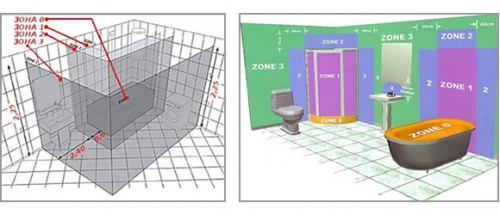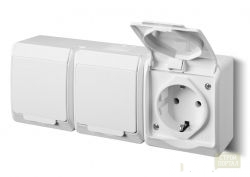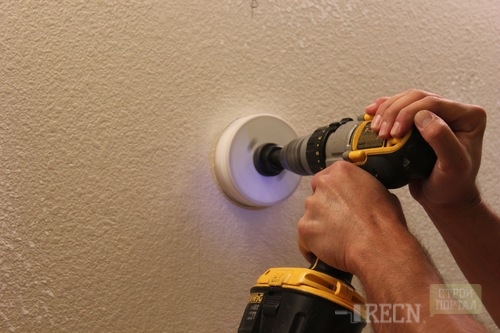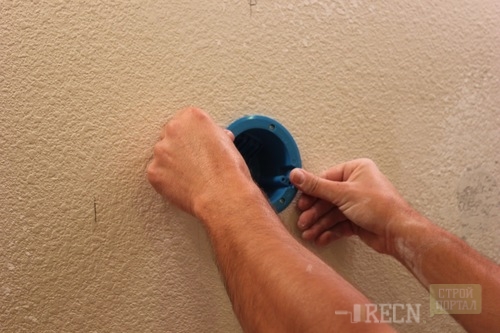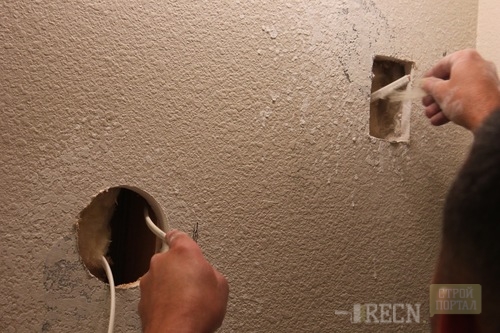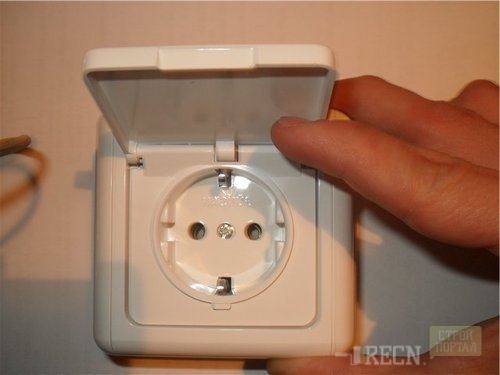
How to install sockets in the bathroom Useful advice

In the bathroom now the sockets have become a necessity. Previously, several decades ago, they were considered a taboo because of the fear of the emergence of a short circuit. And there was no sharp need to establish a socket in the bathroom, because then people used ordinary baths and washbasins. All components of the bathroom did not require power supply.
Nowadays, without electricity, even in the room of hygiene can not do. The socket in the bathroom is necessary for:
- the work of the washing machine;
- jacuzzi bath connections;
- connecting epilator, electric shaver, hair dryer;
- connecting the device for drying hands and heated towel rail;
- setting the mirror in the bathroom with a power outlet;
- fan connections (extractor);
- connecting a water heating boiler.
Installing the outlet in the bathroom must be made according to the established rules. If the rosette was installed incorrectly, the consequences may be serious.
Basic installation requirements
- The main rule is to install a socket at a distance of 60 centimeters from the bathroom (or shower) and sinks.
- When the outlet installation works are performed, the wiring must be only hidden. It will protect you from the water and condensate splashing.
- In the bathroom, the sockets must be grounded.
- To avoid condensate accumulation, the sockets are undesirable to install on the outer walls.
- Connection locations with electrical wiring is needed carefully.
- Standard outlets - waterproof sockets for the bathroom (IP44 marking). The socket has an additional seal and wings that protect against ingested moisture. The socket has a grounding.
- The maximum distance of the location of the outlet from the border of the bathroom (vertically) is one meter.
Danger zone
Before installing the socket, it is necessary to consider the main zones of danger. Electricians allocated four security zones. Consider them:
- Zero. The zone where outdoor water is located, this is a soul pallet, bathroom. If it is impossible to refuse to install outlets in these places, the socket must be a special (IP7 class), which is designed for immersion in water.
- Zone 1. It is a bathroom, washbasins, shower. It is necessary to avoid setting out rosettes in these places. Allowed to install only the water heater.
- Zone 2. The location of the socket in 60 centimeters from the zero zone. The installation of lighting equipment, exhaust fans, outlets are allowed. Flame class IPH4.
- Zone 3. Safe to install any electrical disfiguration. Located at a distance of three meters from the open water. You can install sockets if you can connect the power of the socket line through the distribution transformer or if the socket line has an Uzo protection (protective shutdown device).
The location of the outlets in the bathroom can be visually seen in the photo:
In the first three zones (0, 1, 2), it is forbidden to install distribution boxes and control devices (for example, "warm floor"). The technical requirements of the installation of sockets in the bathroom can be studied more detailed in the "rules of electrical installations".
Division of room space on electrical zone.
Install the bathroom sockets
There are two methods setting outlets: installation of new, where it is necessary to pre-replace the wiring and installation of an additional outlet, while the wiring is already available, and it is not necessary to change it.
Installing a new outlet:
- Bathroom wiring must be highlighted in a separate group and power to connect a separate cable.
- Install the protection machine, so the wiring will be protected.
- Install the protective shutdown device.
- The height of the socket in the bathroom should be at least 60 centimeters from the edge of the bathroom or shower.
- Wiring must be performed by a three-wire cable (it must have a double insulation and protective conductor).
- The socket must be equipped with grounding contact.
- The socket must be equipped with a protective lid.
- Semi-hermetic socket (with lid) and airtight socket.
- Installing an additional outlet: If the repair is not planned in your bathroom, you can carry out grounding from the existing electrical pipeline, install a transformer. Transformer (separating). Or spend a new wiring in the bathroom from the electrical panel.
- The second socket is installed in all the above rules and have a distance of at least 60 centimeters. The socket has a semi-hermetic body and is equipped with a protective lid.
- If your bathroom is very big, then you can install the outlets are remotely, but the distance from the border of the bath is at least two and a half meters. Grounding - be sure. Tip: It is impossible to use metal pipes and construction reinforcement as a ground.
Installation
To install sockets and switches for the bathroom, you will need such tools:
- Crosshead screwdriver.
- Screwdriver indicator.
- Circumgars.
- Machine-stripper for removing isolation.
- Level.
- Drill.
Perhaps not everyone has an electrician tool in the house. It is not scary. It is possible to remove the remnants of the insulation by an ordinary knife, and the wires in the rosette to send with their hands (in gloves), the level can be set using a ruler. Only the voltage indicator you need to check the absence of the phase.
The main rule. Before installing the socket, you need to de-energize the wire - disable the protection device.
We will proceed to install the outlet.
- First you need to prepare a hole for the outlet. It must be done with a drill and a special cutting nozzle.
- After our hole is ready, proceed to the installation of the socket. Install the insulating box. Prepare Wires. They need to be cleared of isolation. Make it easily with a stripper type or painting knife. Clean carefully if you work with a knife, it is better to wear gloves. First cut insulation along, no more centimeter, remove and remove the second part. It is impossible to remove the insulation with a knife, drawing it around the wire itself, so you can damage the conductor and the wire can easily break.
- You have connected wires, now put the outlet in the opposition. Wires need to be put so that they do not interfere, and fasten the housing of the socket with the help of fastening screws.
- To the socket served for many years, it must be operated correctly. To the socket does not flaw and fall out out of the box, when using it, you need to hold one hand.





